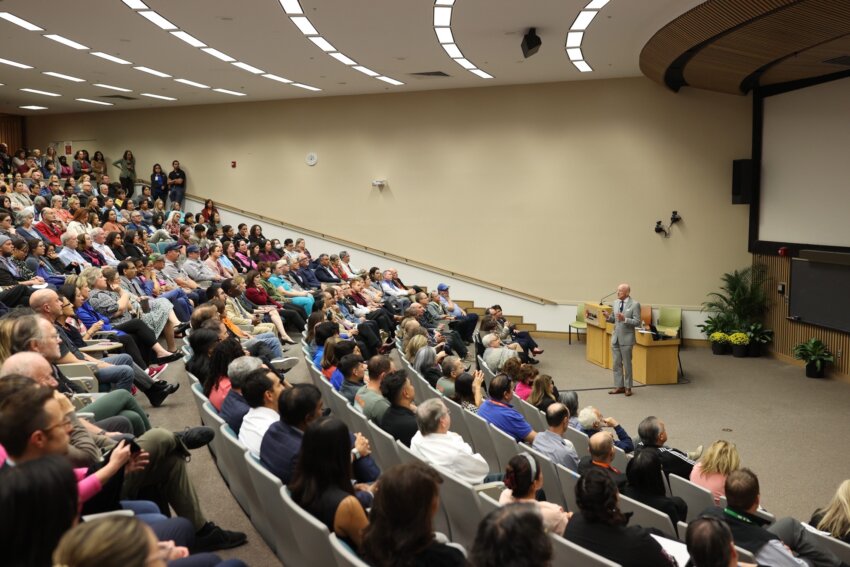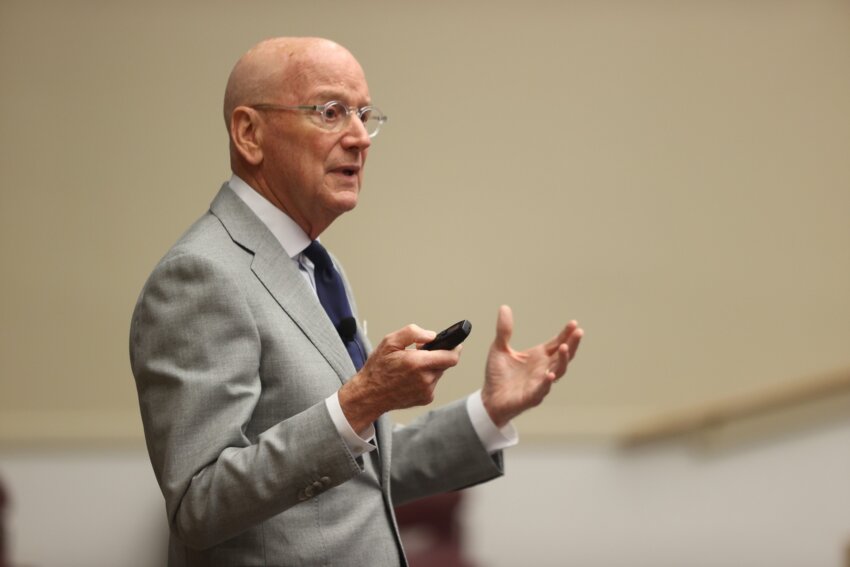President’s Forum addresses university’s exciting future of growth and innovation
UT Health San Antonio is heading into an exciting new era of growth in multiple arenas, from the new UT Health San Antonio Multispecialty and Research Hospital and the opening of the UT School of Public Health San Antonio in fall 2024 to new and innovative facilities and partnerships benefiting the community, said President William L. Henrich, MD, MACP, at the Oct. 18 President’s Forum.
“This is a new era for us and everything in this new era, anything in this new era, is possible for UT Health San Antonio,” he said.
During the full-capacity event, Henrich discussed the university’s accomplishments and his work plan for fiscal 2024 in the areas of education, health care, research, operational excellence, community engagement and the employees and students at UT Health San Antonio.
Click here to view the recorded video of the President’s Forum.
Education
Henrich said the university’s student body has grown 3.5% from last year and it’s anticipated that more than 4,000 students will be attending the institution in the next two years.
 The biggest increase in students is anticipated in the School of Nursing, which maintains a national ranking in the top 5% among undergraduate nursing programs.
The biggest increase in students is anticipated in the School of Nursing, which maintains a national ranking in the top 5% among undergraduate nursing programs.
Henrich praised the school’s pass rates for the National Council Licensure Examination (NCLEX), which surpassed 95% during the 2022-23 school year.
“This is an outstanding record,” he said. “It shows that the school is doing very well, not only in attracting outstanding students, but also in their outcomes.”
In fiscal 2024, Henrich’s work plan for education includes these goals:
- Increasing enrollments by 3%.
- Growing the number of interns, residents and fellows-in-training.
- Continuing positive outcomes of student success in all five schools.
- Driving innovation, educating public health professionals and growing integration with public health policy.
- Launching the UT School of Public Health San Antonio.
“We want to be the destination of choice for outstanding students [who] have multiple acceptances to their respective schools,” he said.
Henrich praised the accomplishments of each of the schools and noted the impressive rankings of the School of Dentistry, which ranks 16th among U.S. universities and No. 1 among the three Texas schools included in the Academic Ranking of World Universities.
“The school has just done spectacularly in terms of its achievements,” he said.
Health care
Henrich said that revenues for UT Health San Antonio’s medical and dental clinical practices are up 64% this year from 2018, with revenues of just over $670 million. In the span of five years, he said the projected revenue from these clinical practices is estimated to be more than $1.1 billion.
“Remember that our practices are the oxygen for everything we do,” he said. “The fact that we are going to be over $1.1 billion in just over a few years is remarkable.”
Some highlights from Henrich’s work plan for health care in fiscal year 2024 include:
- Achieving critical milestones for opening the UT Health San Antonio Multispecialty and Research Hospital and other key clinical expansion projects.
- Recruiting key leaders, providers and staff needed to support the new hospital.
- Maintaining the construction schedule and budget for the new hospital, anticipated to be open in December 2024.
- Meeting critical milestones for Epic upgrades and implementations for the outpatient and inpatient projects.
- Opening the UT Health Physicians Kyle Seale Parkway clinic by March 2024.
Research
Henrich lauded the unprecedented growth in sponsored programs at the university, which have doubled since 2016. In 2023, UT Health San Antonio was awarded $408 million in sponsored programs. During the summer alone, the university received $100 million in funding from the National Institutes of Health. Henrich noted that extramural funding for the Glenn Biggs Institute for Alzheimer’s and Neurodegenerative Diseases at UT Health San Antonio rose 602% to $19 million since 2016.
Henrich praised the work of Mays Cancer Center Interim Director Patrick Sung, DPhil, Department of Biochemistry and Structural Biology, and noted that the cancer center had a 126% increase in external cancer research awards since 2016, receiving nearly $100 million in awards in 2023.
Looking ahead, the university will be hiring a new cancer director at the Mays Cancer Center, home to UT Health San Antonio MD Anderson Cancer Center.
For fiscal year 2024, Henrich’s work plan for research includes:
- Increasing total research expenditures by 7.5%.
- Increasing public service awards by 5%.
- Growing NIH funding by 8.5%.
- Increasing industry-sponsored clinical trial revenue by 2.5%.
Operational excellence and our people
Henrich said the university had more than a 25% increase in employees since 2017 and he expects the university to add 1,000 new employees by fiscal year 2025.
Henrich praised the level of brand and marketing awareness the university has achieved, with 76% of the market having a very positive or positive perception of the university. Henrich added that UT Health San Antonio rates as the most preferred hospital or facility in Bexar County for cancer screening or cancer care above all other competing health systems.
Henrich also extolled the university’s recent award of Best Company Perks & Benefits by Comparably, an employer recruitment, culture and branding site, and making Forbes magazine’s list of Best-In-State Employers for the third straight year.
Community Engagement
Henrich was pleased to announce that the university made its State Employee Charitable Campaign goal of nearly $400,000 and discussed the community health benefit of the university’s multiyear partnership with the San Antonio Spurs to pursue innovations in human performance and improve the health of the greater San Antonio community.
“Now, there’s a reason that [UT Health San Antonio] is so highly regarded across the whole spectrum of San Antonio’s needs,” he said. “San Antonio and South Texas are considered among the three areas of the country most affected by poverty. San Antonio is the largest big city with the highest poverty rate. So that means that the need is incredible and there are very few institutions, large institutions, that are attacking this need on the daily basis. In fact, I would say that the principal institution is UT Health San Antonio.”
Keeping an eye toward the future
 In closing, Henrich referred to Walter Prescott Webb’s 1931 quote, “ … at this fault, the ways of life and living changed. Practically every institution that was carried across it was either broken and remade or else greatly altered.” The quote described the 98th meridian as the dividing line between the western and eastern parts of the country.
In closing, Henrich referred to Walter Prescott Webb’s 1931 quote, “ … at this fault, the ways of life and living changed. Practically every institution that was carried across it was either broken and remade or else greatly altered.” The quote described the 98th meridian as the dividing line between the western and eastern parts of the country.
“This struck me as an apt metaphor for what’s happened here,” Henrich said. “So we’ve had to, in essence, in these last five years, in this last decade, do what Webb talked about. To remake ourselves. If we hadn’t started down this path, then what we’d be facing today was the prospect of becoming relics.”
Henrich said the university is a complicated organization, trying to act as one organism when, in reality, it is a multitude of complex parts. For the organization to remake itself, virtually everything and everyone has had to change in fundamental ways including the way patients are scheduled, seen and followed; the way teaching takes place; and the way capital projects are approached and funded.
Henrich continued that while the university has had to break the bonds of dogma, separate from the past, and embrace the future, there is one thing that has not changed and will never change.
“That is our respect, our deep abiding respect for the precious gifts of life and health and our devotion to making to the extent we can make those essentials available to every single person we have the privilege to touch,” he said. “That is our mission moving forward. It’s the underlying reason why we work so hard.”


